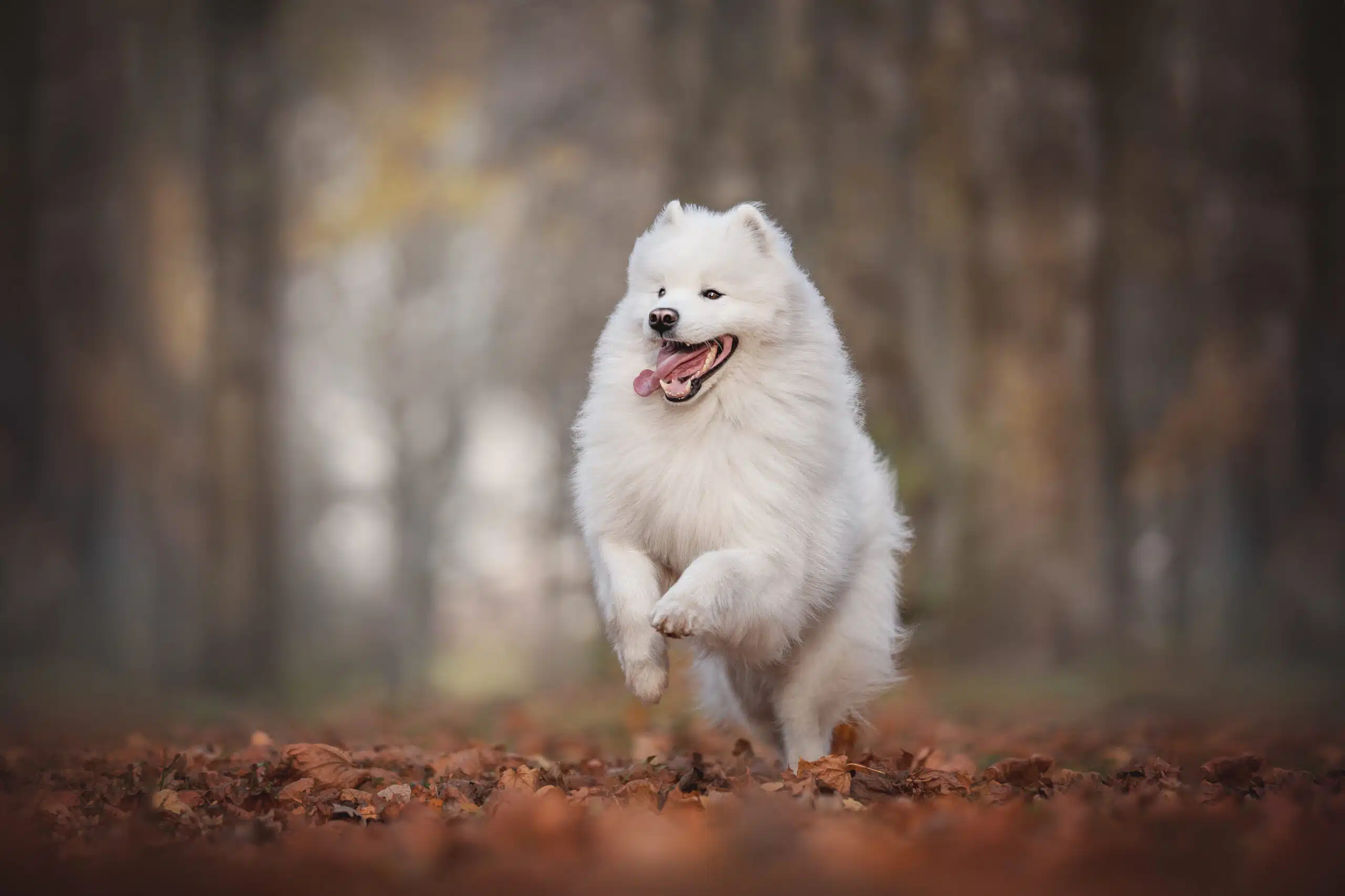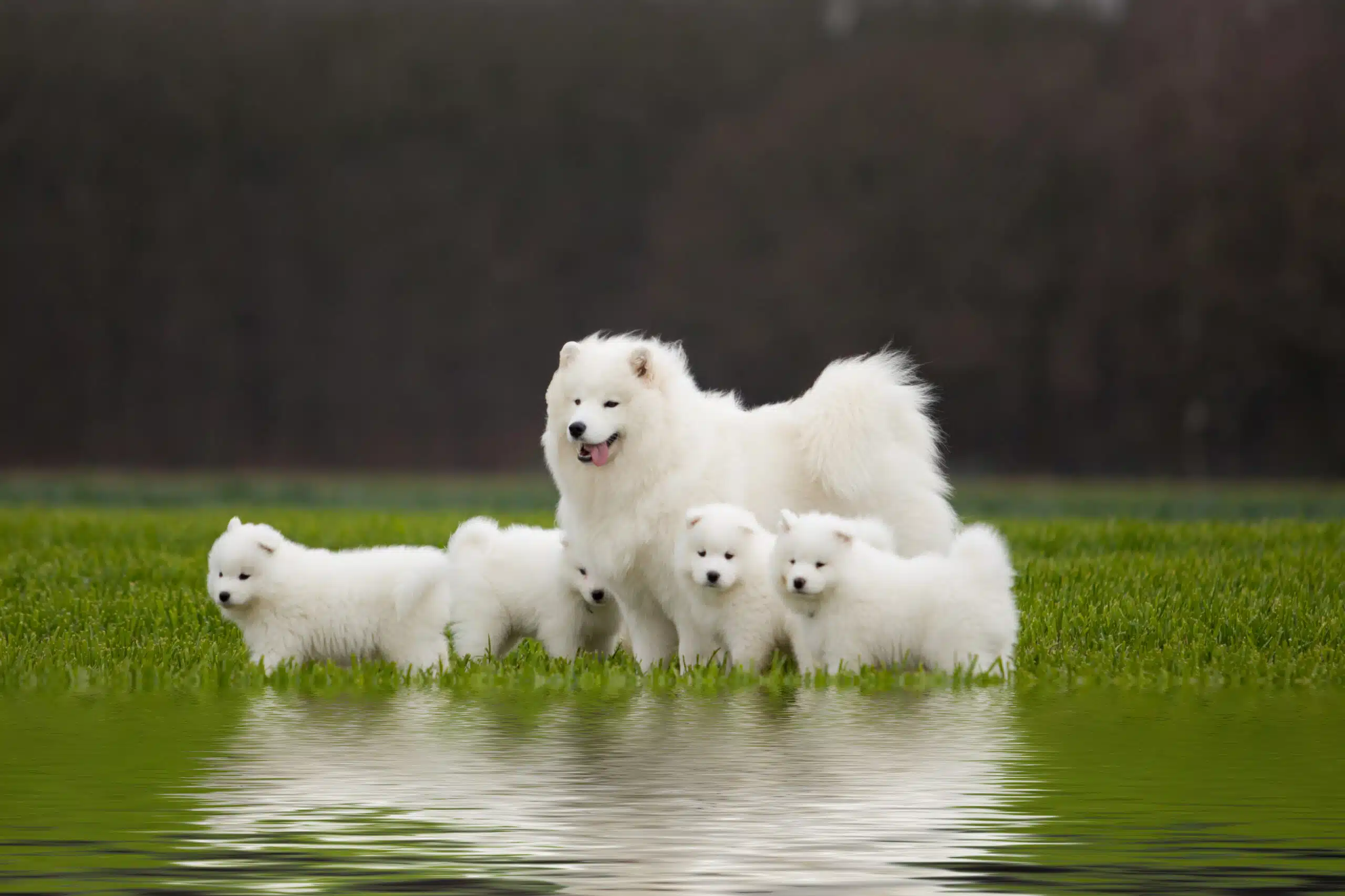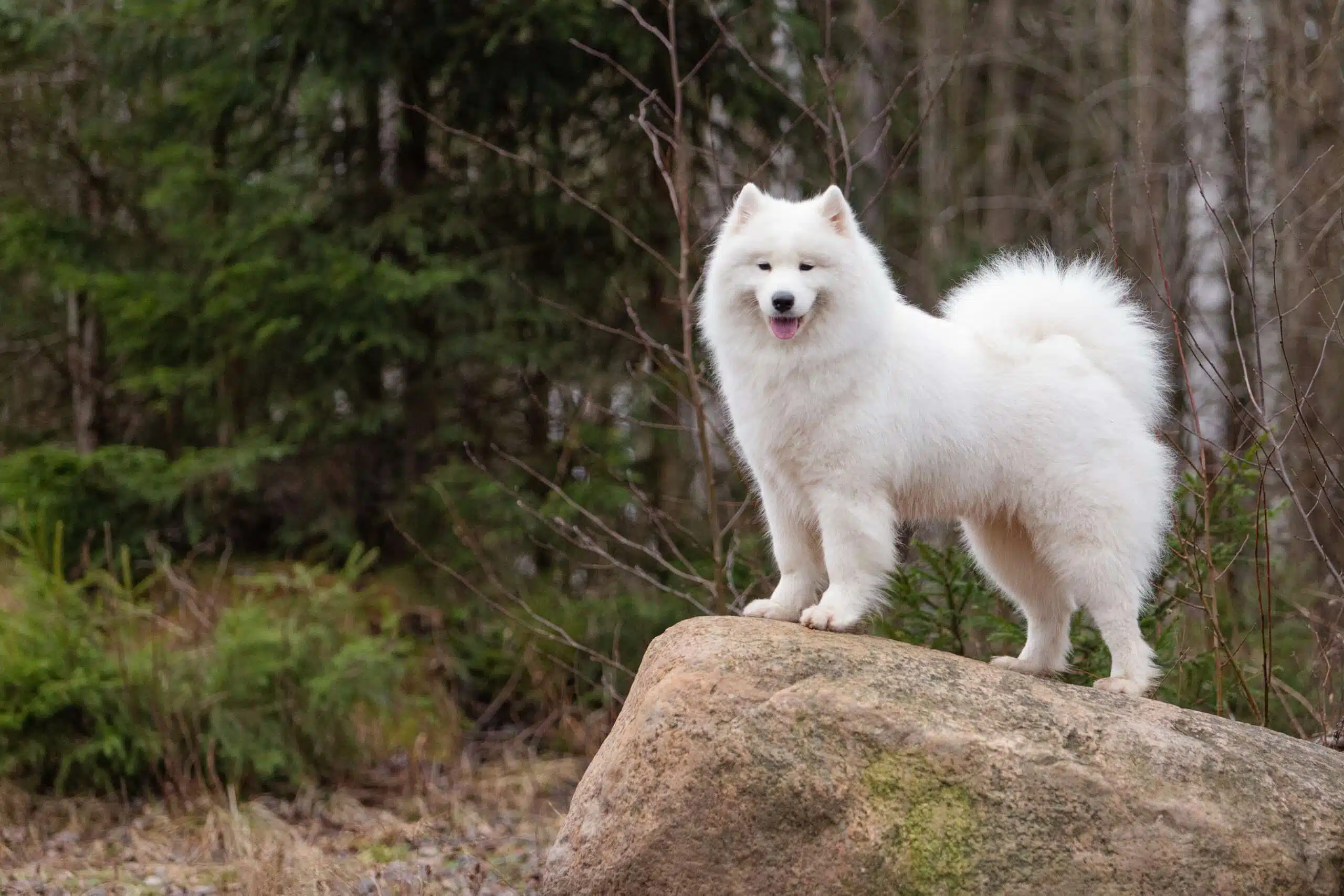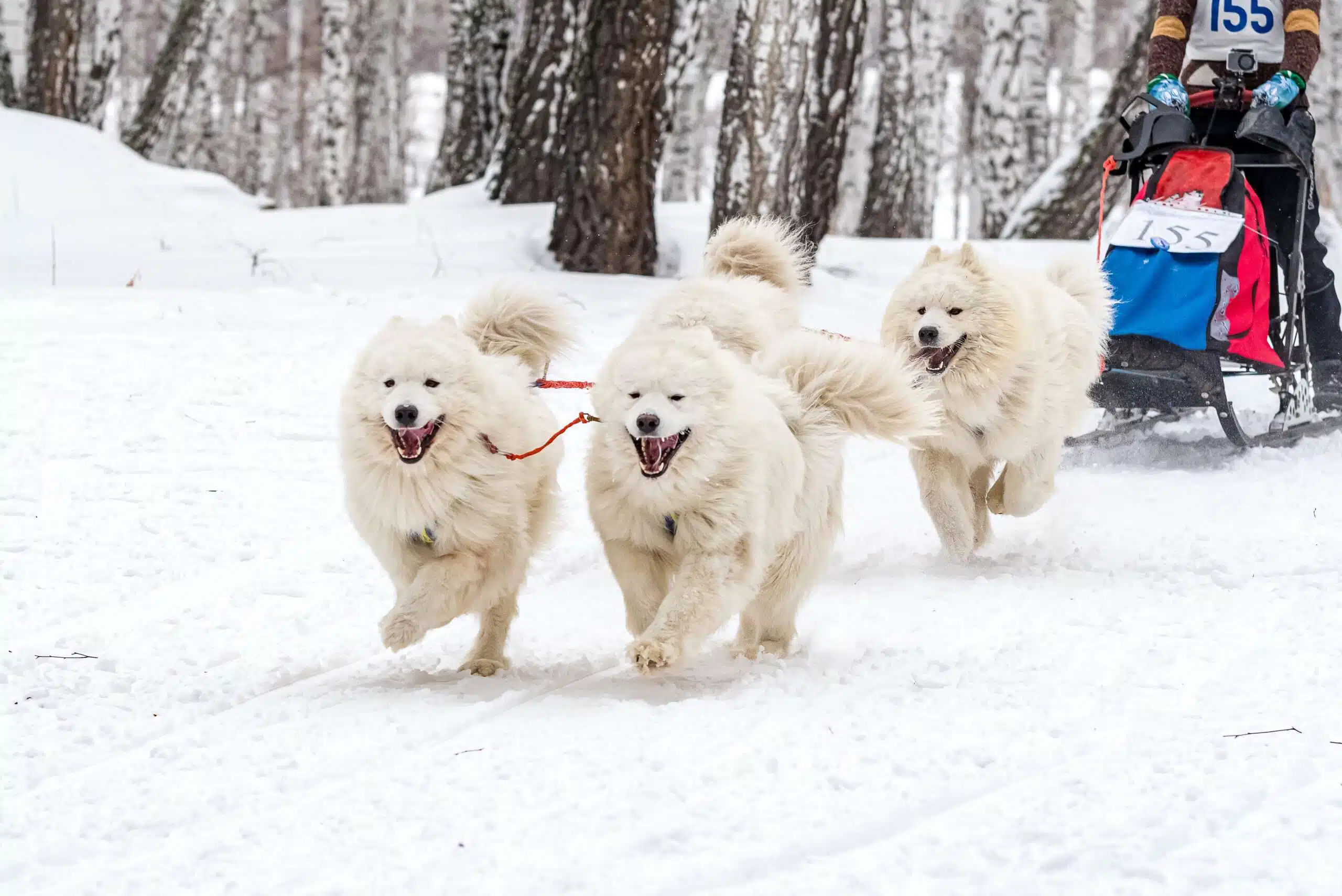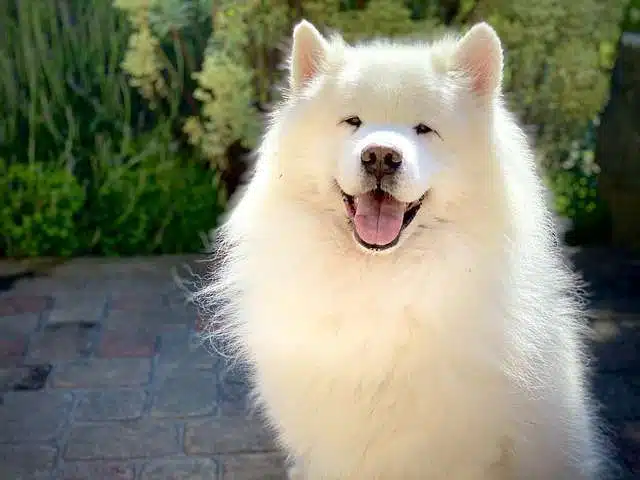Samoyed
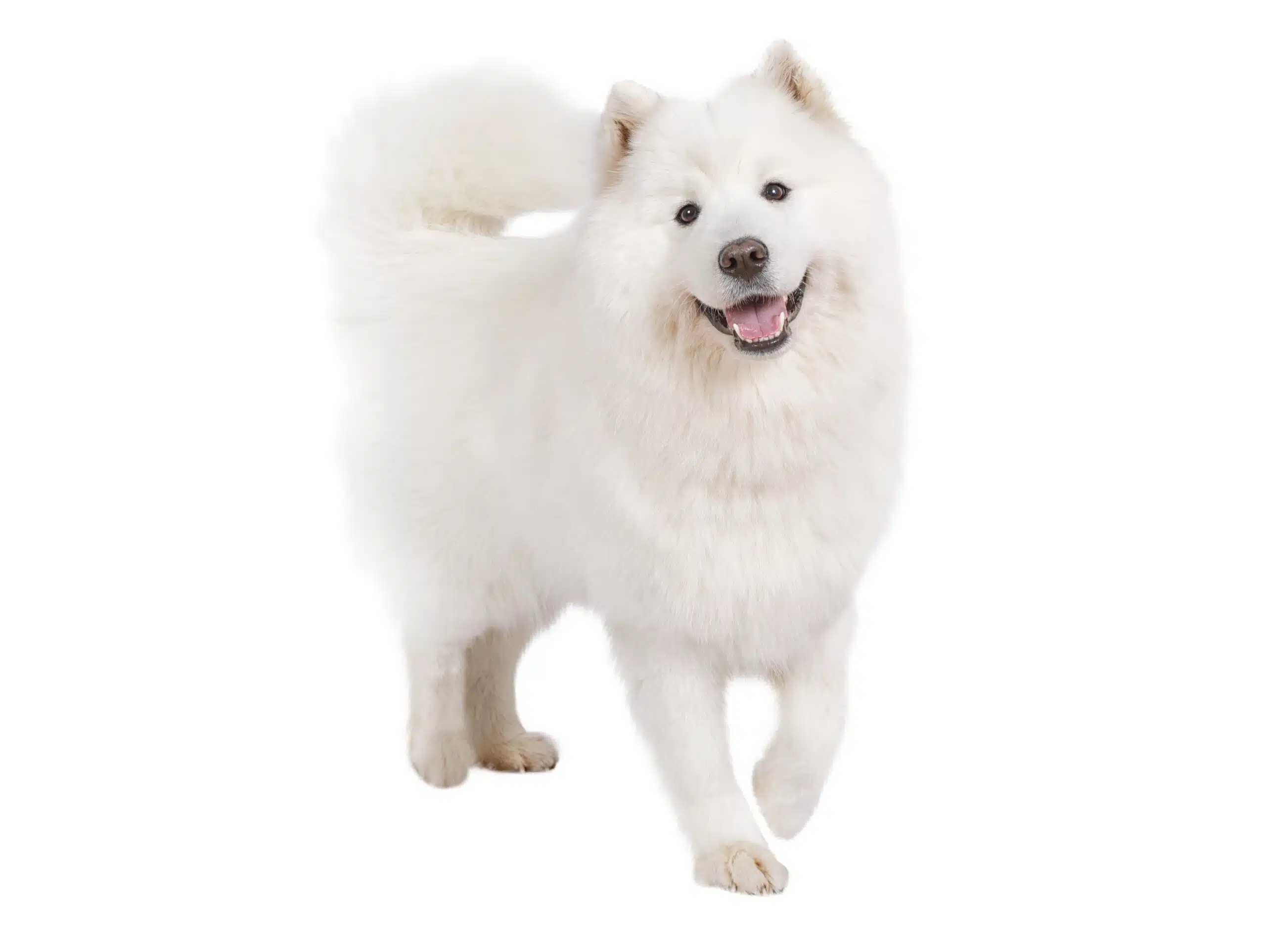
As the Samoyed people and their beloved dogs were pushed further north by other tribes, they eventually found themselves in a land of snow and ice on the ends of Earth: a place where they lived as nomads herding reindeer with help from their smart four-legged friends. They also used them to pull sleds and keep warm at night. DNA analysis results declared this breed an “ancient” one, which gives us insight into how some of the earliest domesticated canines may have appeared.
The joyful and easy-going Samoyed, also known as the “Smiling Sammie”, loves his humans and cats that he may have been brought up with. Be aware – this reindeer herder is slightly headstrong so positive reinforcement training will be most successful! His luxurious white coat needs to be groomed two or three times a week in addition to its tendency for heavy shedding.
The Samoyed, most commonly known as the ‘Sammie’, is one of the world’s most captivating and alluring breeds. With its plush white coat, wedge-shaped head, pointed ears and sweeping tail that constantly wags with excitement over his back; it’s no wonder why this breed stands out from other canines. The Sammie isn’t just an attractive sight to see – he also has a smart yet lively temperament! That being said, if you’re looking for a pup companion then please keep in mind that this may not be the best option for everyone.
Above all, the Samoyed is a gentle and affectionate breed. He forms close relationships with his owners and makes an excellent family pet for households that have children. Additionally, this pup loves meeting new people; he’ll often greet strangers warmly and be open to making friends with other animals if raised in their company from early on.
Unfortunately, this pup needs a lot of activity and stimulation to stay healthy. Plus, he barks frequently- it’s up to you to teach him how and when it’s appropriate. If not entertained or kept busy with exercise, he may start digging around your yard! He also has an independent spirit which can make training difficult at times.
With the right attitude, commitment and positive reinforcement techniques such as praise, play and food rewards, training your Samoyed can conquer his stubbornness. Exercising regularly with consistency is essential to ensure that he responds accordingly. Fortunately all these efforts will pay off if you are able to invest in him the time it takes to train him properly!
Make sure to provide your pup with regular exercise, such as long walks or engaging playtime in the yard. Additionally, he can participate in competitive canine sports like agility, herding obedience and rally if his health permits it! You could even go a step further by trying out fun activities like dog-sledding or skijoring. To be on the safe side, always ask for approval from your vet before beginning an all new training regimen with him.
It is not unexpected to learn that the luxuriously thick coat of a Samoyed requires special attention. Daily brushing, and bathing every six weeks are needed for optimal care; if neglected, their hair can become matted and require complete shaving – something that will be very distressing for them.
- Group AKC Working
- Origin Russia
- Size Medium
- Weight 50 to 60 pounds
- Coat Length Long
- Coat Type Double
- Colors Biscuit,Cream,White,White & Biscuit
- Other Names Samoyedskaya, Bjelkier, Samoiedskaya Sobaka, Nenetskaya Laika, Smiley, Sammy
- Temperament Alert,Lively,Friendly,Intelligent,Playful,Sociable,Stubborn

